My Nepal My Pride. Nepal is a landlocked country in South Asia but Nepal has a great deal of variation in climate. Outside the Tarai, however, the climate is completely different. The remarkable differences in climatic conditions are primarily related to the enormous range of altitude within such a short north-south distance. The presence of the east-west-trending Himalayan massifs to the north and the monsoonal alteration of wet and dry seasons also greatly contribute to local variations in climate.... five climatic zones in Nepal based on altitude: the tropical and subtropical zone of below 1,200 meters in altitude; the cool, temperate zone of 1,200 to 2,400 meters in altitude; the cold zone of 2,400 to 3,600 meters in altitude; the subarctic climatic zone of 3,600 to 4,400 meters in altitude; and the arctic zone above 4,400 meters in altitude. In terms of natural vegetational regimes or distribution patterns, altitude again plays a significant role. Below 1,200 meters, the dominant form of vegetation consists of tropical and subtropical rain forests.
Saying that 80 per cent of the rain falls during that period. The monsoon is approximately from the end of June to the middle of September, so the remainder of the year is dry. Spring and autumn are the most pleasant seasons; winter temperatures drop to freezing with a high level of snowfall in the mountains. Summer and late spring temperatures range from 28ºC (83ºF) in the hill regions about 40ºC (104ºF) in the Terai. In winter, average maximum and minimum temperatures in the Terai range from a brisk 7ºC (45ºF) to a mild 23ºC (74ºF).
Nepal’s weather is normally predictable and pleasant mainly there are four climatic seasons like (a) Spring : March-May, (b)Summer : June-August, (c) Autumn : September-November, (d) Winter : December-February.
The highest mountain in the world attracts many well-experienced mountaineers as well as novice climbers
who are willing to pay substantial sums to professional mountain guides to complete a successful climb. The mountain, while not posing substantial technical climbing difficulty on the standard route (other eight-thousanders such as K2 or Nanga Parbat are much more difficult), still has many inherent dangers such as altitude sickness, weather and wind.
Required Clothing: Lightweight and tropical clothes with umbrella are advised for June to August. Between October and March, lightweight clothes are worn in Kathmandu, with a coat for evenings and warm clothing for the mountains. When trekking in the mountains, high quality trekking gear that can handle minus temperatures is recommended all year round.
The weather and climate are controlled by the same general features as those described for India: the seasonal alternation of the monsoon winds. The main rainy season in Nepal is from late June to September.
This is a period of warm to hot temperatures, much cloud, and frequent heavy rain. At this time sunshine averages only two to three hours a day.They also indicate better than the table for Katmandu the likely temperature conditions in the more highly populated regions of Nepal.
This Himalayan kingdom is divided into three regions. Himalayan range and its watershed area in the north,
and Mahabarat range and Churia hills in the middle and Terai (plain) in the south. Himalayan range includes 8 of the 14 highest peaks of the world that has altitude more than 8000 meter: Mt. Everest (8848m), Kanchanjunga (8586m), Lhotse (8516m), Cho Oyu (8201m) and Dhaulagiri (8167m), Mt. Makalu (8463m), Manaslu (8163m) and Annapurna I (8091m). It covers about 16% of the total land area of Nepal with elevation range from 2500m to 8848m-(Everest). The middle hills known as Mahabarat range encompass 65% of the area with altitude range from 500 to 3000 meters above sea level. The plain area known as Terai covers 17% of the land with altitude range from 100 to 300m. Because of its fertile land now Terai has 48% of the country’s population. Some of the best known national parks are in this region.
Springs and autumn seasons are no doubt best time to visit Nepal. Other seasons like summer, monsoon, and winter are equally good if purpose of visit is different. For tours and treks in the Himalayas that are in rain shadow - Mustang, Inner Dolpo, Kailas and Tibet - summer (May, June, July) and end of Monsoon (September) season are better. Weather in winter is pleasant in the lower mountain area and in southern part of Nepal where Lumbini (Buddhist pilgrimage site) and National Parks are located. Winter is also nice to do short trek and hiking in the lower foothills and meet people when they are generally free for festivals and leisure. Autumn Monsoon rain normally ends by middle of September. Sometime rain drags on to the first week of October. Generally weather in October and November is cold in the night and warm during the day. Sky remains clear through out most of the day. It is good time to get great view of the snow peaks. From the second half of November weather starts getting colder and in the mountain snow starts to fall. Average temperature above 3000 to 4000m is around 4 to 18 degree Celsius. Above 4000 meter, the night temperature falls below zero to minus 10 degree Celsius. Below 3000meter, average temperature ranges around 10 to 25 degree Celsius. In Tarai region night is cold and day is hot.
Winter starts from December and remains until February. Usually at Christmas and New-year fresh snow falls on the mountain above 3000 meter. Temperature drops to 2 degree Celsius in the night in the middle hills and less than zero degree in the mountain above 2500m. During day it is sunny and warm with an average temperature of 19degree Celsius.
Spring is great when the air is cool like breeze and sun is shining. The mountain landscape is covered with snow, colourful flowers of rhododendron forests In March and April. You can see birds migrating and wild life animals easily in their habitats. There is less snow on the mountain pass. Usually sky is clear in morning and evening but during day it is cloudy. In April the weather becomes warmer (25 to 30 degree Celsius) and in May the temperature reaches around 35 degree Celsius. Summer starts from middle of May and remains until beginning of July. This is the hottest period. But not so hot for people who lives in temperature above 35 degree Celsius.
Monsoon rain starts from beginning of July. Heavy rainfall occurs at the end of July (375 to 800mm). It becomes lesser (375 to 400mm) at the end of August and beginning of September. By middle of September usually the weather starts becoming drier. Rain does not pour every day, not even in the middle of monsoon. There are several dry days in between. Temperature is nice and pleasant (20 degree Celsius) in the middle Mahabarat range and cooler in the mountain above 3000 meter.Temperature given here is a guideline average during the season.
who are willing to pay substantial sums to professional mountain guides to complete a successful climb. The mountain, while not posing substantial technical climbing difficulty on the standard route (other eight-thousanders such as K2 or Nanga Parbat are much more difficult), still has many inherent dangers such as altitude sickness, weather and wind.
Required Clothing: Lightweight and tropical clothes with umbrella are advised for June to August. Between October and March, lightweight clothes are worn in Kathmandu, with a coat for evenings and warm clothing for the mountains. When trekking in the mountains, high quality trekking gear that can handle minus temperatures is recommended all year round.
The weather and climate are controlled by the same general features as those described for India: the seasonal alternation of the monsoon winds. The main rainy season in Nepal is from late June to September.
This is a period of warm to hot temperatures, much cloud, and frequent heavy rain. At this time sunshine averages only two to three hours a day.They also indicate better than the table for Katmandu the likely temperature conditions in the more highly populated regions of Nepal.
This Himalayan kingdom is divided into three regions. Himalayan range and its watershed area in the north,
and Mahabarat range and Churia hills in the middle and Terai (plain) in the south. Himalayan range includes 8 of the 14 highest peaks of the world that has altitude more than 8000 meter: Mt. Everest (8848m), Kanchanjunga (8586m), Lhotse (8516m), Cho Oyu (8201m) and Dhaulagiri (8167m), Mt. Makalu (8463m), Manaslu (8163m) and Annapurna I (8091m). It covers about 16% of the total land area of Nepal with elevation range from 2500m to 8848m-(Everest). The middle hills known as Mahabarat range encompass 65% of the area with altitude range from 500 to 3000 meters above sea level. The plain area known as Terai covers 17% of the land with altitude range from 100 to 300m. Because of its fertile land now Terai has 48% of the country’s population. Some of the best known national parks are in this region.
Springs and autumn seasons are no doubt best time to visit Nepal. Other seasons like summer, monsoon, and winter are equally good if purpose of visit is different. For tours and treks in the Himalayas that are in rain shadow - Mustang, Inner Dolpo, Kailas and Tibet - summer (May, June, July) and end of Monsoon (September) season are better. Weather in winter is pleasant in the lower mountain area and in southern part of Nepal where Lumbini (Buddhist pilgrimage site) and National Parks are located. Winter is also nice to do short trek and hiking in the lower foothills and meet people when they are generally free for festivals and leisure. Autumn Monsoon rain normally ends by middle of September. Sometime rain drags on to the first week of October. Generally weather in October and November is cold in the night and warm during the day. Sky remains clear through out most of the day. It is good time to get great view of the snow peaks. From the second half of November weather starts getting colder and in the mountain snow starts to fall. Average temperature above 3000 to 4000m is around 4 to 18 degree Celsius. Above 4000 meter, the night temperature falls below zero to minus 10 degree Celsius. Below 3000meter, average temperature ranges around 10 to 25 degree Celsius. In Tarai region night is cold and day is hot.
Winter starts from December and remains until February. Usually at Christmas and New-year fresh snow falls on the mountain above 3000 meter. Temperature drops to 2 degree Celsius in the night in the middle hills and less than zero degree in the mountain above 2500m. During day it is sunny and warm with an average temperature of 19degree Celsius.
Spring is great when the air is cool like breeze and sun is shining. The mountain landscape is covered with snow, colourful flowers of rhododendron forests In March and April. You can see birds migrating and wild life animals easily in their habitats. There is less snow on the mountain pass. Usually sky is clear in morning and evening but during day it is cloudy. In April the weather becomes warmer (25 to 30 degree Celsius) and in May the temperature reaches around 35 degree Celsius. Summer starts from middle of May and remains until beginning of July. This is the hottest period. But not so hot for people who lives in temperature above 35 degree Celsius.
Monsoon rain starts from beginning of July. Heavy rainfall occurs at the end of July (375 to 800mm). It becomes lesser (375 to 400mm) at the end of August and beginning of September. By middle of September usually the weather starts becoming drier. Rain does not pour every day, not even in the middle of monsoon. There are several dry days in between. Temperature is nice and pleasant (20 degree Celsius) in the middle Mahabarat range and cooler in the mountain above 3000 meter.Temperature given here is a guideline average during the season.
Welcome to Nepal Mountain Trekking with Good Climate !!!
In our Nepal, is a unlimited outdoor adventure play-ground. Being home to eight out of the fourteen highest peaks in the world, each over 8000m. and ancient cultures, Nepal is the place to visit. If you are looking for adventure and cultural experience of life time. Nepal has some of the best ever popular hiking, trekking, rock climbing, peak climbing, mountaineering, kayaking, rafting, canyoning, wildlife safari, mountain biking, paragliding, cultural sites and much more. "Nepal Mountain Trekking with good weather” is proud to share our country, its nature & century old cultures, and many more years of understanding in this field with you and give you an brilliant opportunity to look at our beautiful Nepal.
During Tracking , a recent review of the conclusions of Working Group of the Intergovernmental Panel on Climate Change predicts that "if current warming rates are maintained, Himalayan glaciers could decay at very rapid rates, shrinking from the present 500,000 square kilometres to 100,000 square kilometres by 2030s". Since the mountains and surrounding valleys are warming at an alarming rate, it is believed that the increasing temperature will also affect the biotic pool resulting to extinction of some of the precious species. Moreover, it will decrease productivity of biological systems, change floral composition, increase uncertainty, spread diseases and increase in risk of food shortage and starvation in some locations, finally putting human security at a high risk.
Nepal is highly defenseless to natural disaster. There is a high risk of floods in the plain and landslide in the hills. The rate of such ruin is increasing day by day and year by year. Lack of Low awareness level in terms of disaster preparedness and management, lack of efficient mechanisms and capacity to deal with these sort of natural disasters has had severe impacts on the lives of the community, property and economy at large. Climate change has also added to the challenges, principally for the poor in rural areas.
The Effect of Climate Change
Facts are gathering that human activities are changing the climate. This 'Climate Change' could have a huge impact on our beautiful lives. The following tutorial will tell us the facts about climate change, and what effects a change in climate will have on our lives. What is the ‘Factors Affecting Climate’? The Question is that what would we like to look at : What has already halppened ? and another is that What wil the effects be?
Global temperatures have risen by 0.6 degrees Celsius in the last 130 years. This rise in global temperatures leads to huge impacts on a wide range of Climate related factors. The graph below shows the rise of global temperatures since 1860.
Global Temperature
Since 1860
Levels of carbon dioxide, methane and nitrous oxide gases are rising, mainly as a result of human activities. Carbon dioxide is being dumped in the atmosphere at an alarming rate. Since the Industrial Revolution, humans have been pumping out huge quantities of carbon dioxide, raising carbon dioxide concentrations by 30%. The burning of fossil fuels is partly responsible for this huge increase. This graph shows carbon dioxide emissions increasing over the last 130 years.
Global Carbon Dioxide Emissions
We can see that the rate of enhance is huge. How many times greater are the carbon dioxide emissions now than 130 years ago?
Methane levels in the atmosphere have increased by 145% since the Industrial Revolution. This increase is a result of gas produced by livestock and paddy fields.
Once, look at the possible effects of climate change ‘Globally’.
We can also look at 'What we can do to stop the process of global warming.'
Globally
There are some uncertainties as to what effects a change in climate might have on the earth. To predict what might happen, we first need to start by understanding how the increase in gases such as carbon dioxide and methane affect our climate. The diagrams below show the effects of these gases on our atmosphere.
The diagram above left shows the normal conditions of the sun heating the earth. The suns rays hit the earth and some are reflected back into space. However, gases in the atmosphere such as carbon dioxide and methane form a barrier for sunlight. This is shown in the diagram above right. The suns rays hit the earth, but when they are reflected back out into space, they are trapped in the atmosphere. The sun rays cannot escape from the earth's atmosphere, and the earth heats up. This is called the 'Greenhouse Effect'.

As these gases build up, they act like a thick blanket, overheating the planet, changing our climate, and threatening our health, economy and natural environment.
The terms global warming and climate change are often used interchangeably, but the two phenomena are different. Global warming Climate change, on the other hand, is a more general term that refers to changes in many climatic factors (such as temperature and precipitation) around the world. These changes are happening at different rates and in different ways.
is the rise in global temperatures due to an increase of heat-trapping carbon emissions in the atmosphere.
For example, the United States has become wetter over the 20th century, while the Sahel region of central Africa has become drier.
Sun and Earth Under Normal Conditions Barrier Forming in Atmosphere
The diagram above left shows the normal conditions of the sun heating the earth. The suns rays hit the earth and some are reflected back into space. However, gases in the atmosphere such as carbon dioxide and methane form a barrier for sunlight. This is shown in the diagram above right. The suns rays hit the earth, but when they are reflected back out into space, they are trapped in the atmosphere. The sun rays cannot escape from the earth's atmosphere, and the earth heats up. This is called the 'Greenhouse Effect'.
We already know that a global temperature rise of 2.5 degrees Celsius will have a detrimental effect on the earth. One impact of climate change would be a rise in global sea levels. If the heat from the sun cannot escape through the earth's atmosphere then the ice at the north and south poles could melt. This could have a huge effect on the low lying areas of the world.
In 1998, 46 million people live in areas at risk of flooding (BBC News, 1997). This amount could increase rapidly if sea levels rose. Scientists estimate that a sea rise of only 50 centimetres would increase the number of people at risk to 92 million. A sea level rise of 1 metre would put 118 million people at risk. Scientists believe that there will be a sea level rise of 50 centimetres over the next 40 to 100 years (BBC News, 1997).
The diagram below shows the effect of a rising sea level on the low lying area of the Nile Delta.
on the Nile Delta
This diagram shows the amount of land that would be lost in the Nile Delta if the world's oceans rose by 1.5 meters. You can see the huge effect it would have on the area. The rise in sea level would also make millions of people homeless and ruin valuable farmland.
A change in climate would have an effect on the world's vegetation zones. We would see a change in the boundaries between grassland, forest and scrublands. This change in vegetation zones could cause famine in arid areas such as Africa that depends on a certain type of crop. The change in vegetation would cause mass movement of people away from arid regions. This could cause huge over-crowding in towns and cities.
The range of cockroaches could also change if the vegetation changed. This could bring about an increase in disease levels.
The ecosystems could be affected by a change in high temperature. It has been predicted that an increase in temperature would affect species composition. Scientists also believe that up to two thirds of the world's forests would undergo major changes. Scientists believe that deserts would become hotter, and desertification would extend and become harder to reverse.
All these changes could occur if we carry on polluting the atmosphere with gases. There are many things we as individuals can do to help slow down any increase in global temperatures.
Carbon dioxide has an effective lifetime of about 100 years. This means that any changes in the atmosphere will take along time to develop. If we cut down on the amount of carbon dioxide we use, the rate of climate change will slow down.
Carbon Dioxide is a By-Product
of Power Stations
Source :- http://news.bbc.co.uk/hi/english/special_report
There are many things we can do for stopping Global warming. One way we can cut down on the amount of carbon dioxide we use is by making less car journeys. How often do you get a lift to school when you could easily have walked? Could you share a lift with a friend so only one car would need to be used? These small differences count for stopping Global warming. We could also use less carbon dioxide by using better insulation in our homes. This would lessen the need to burn fossil fuels such as coal and oil that give off carbon dioxide. We could also switch to using renewable sources of energy such as wind or solar power.
Additional impact of Climate Change
Climate change is already affecting our lives and the places we live, and has the potential to dramatically impact the lives of future generations.
The Nature Conservancy is joining with policy makers, community members, businesses, scientists, industry leaders and others to slow the pace of climate change.
We work to reduce the accumulation of heat-trapping gases in the atmosphere and help natural areas adjust to the impacts of climate change.
If we don't act now, we will leave a much larger problem to our children. The good news is that, if we all join in to stop climate change, we can reduce its impact on our lives, on our environment and on future generations.

The Truth About Climate Change
Do We Know that what is the Climate Change mean ?
Climate change is caused by the emission of heat-trapping gases - mostly carbon dioxide (CO2) - from vehicles, industry, power plants and deforestation.
Climate change is caused by the emission of heat-trapping gases - mostly carbon dioxide (CO2) - from vehicles, industry, power plants and deforestation.
As these gases build up, they act like a thick blanket, overheating the planet, changing our climate, and threatening our health, economy and natural environment.
The terms global warming and climate change are often used interchangeably, but the two phenomena are different. Global warming Climate change, on the other hand, is a more general term that refers to changes in many climatic factors (such as temperature and precipitation) around the world. These changes are happening at different rates and in different ways.
is the rise in global temperatures due to an increase of heat-trapping carbon emissions in the atmosphere.
For example, the United States has become wetter over the 20th century, while the Sahel region of central Africa has become drier.
How to Improve Your Search Engine Ranking on Google
Keyword Density in Search Engine Ranking
Website Promotion and Search Engine Optimization

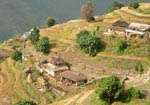


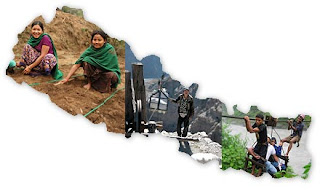
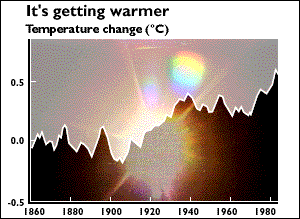






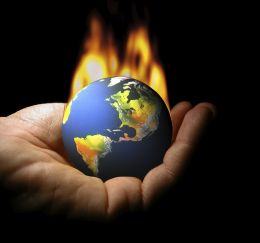
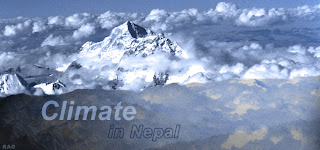
No comments:
Post a Comment